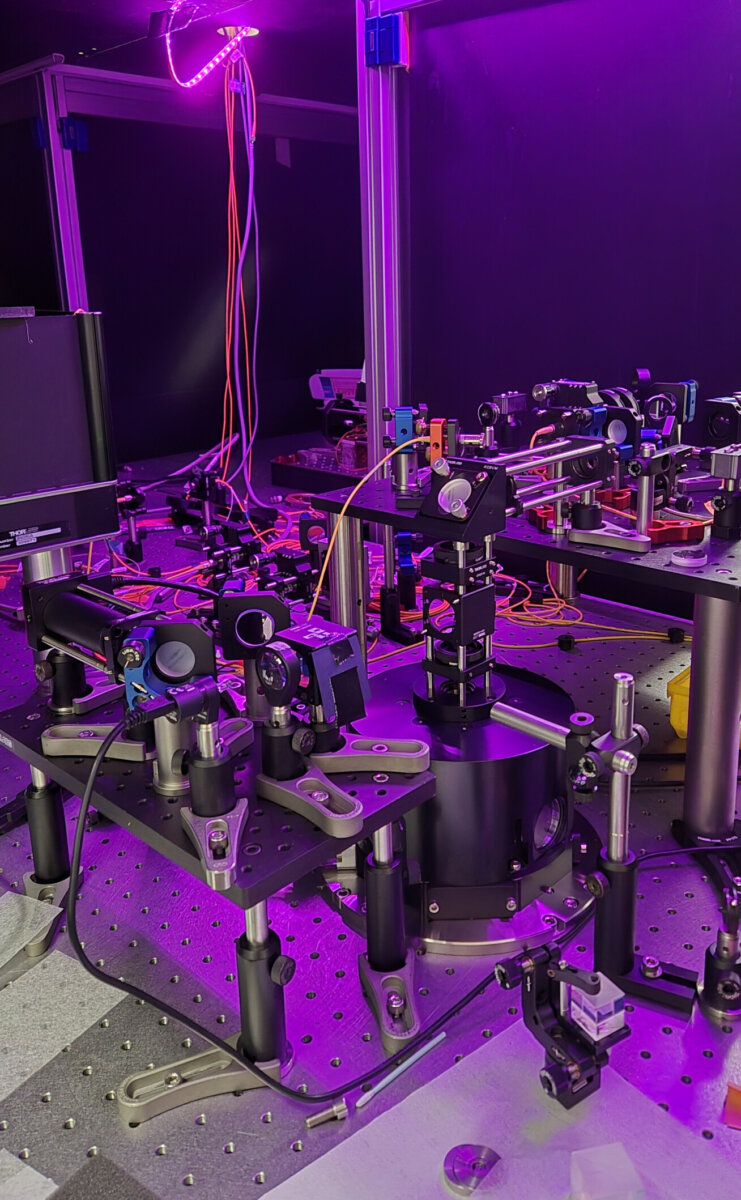london – Quantum computing isn’t just a dream for scientists and engineers: it’s a reality that awaits us. When we arrive at this reality that was once science fiction fodder, questions remain. Now, for the first time, researchers have successfully created an interface that allows two machines to connect and share stored quantum information, essentially the first tangible step towards a “quantum internet.” This feat was also achieved at wavelengths compatible with the fiber optic systems we use for telecommunications today.
This breakthrough brings us closer to a world where messages can be transmitted with absolute security and complex calculations can be performed at lightning speed. This is the promise of quantum technology, which exploits the exotic properties of quantum mechanics, such as superposition and entanglement. However, realizing this potential requires the ability to transmit and store quantum information, which is typically carried by single particles of light called photons.
One of the most promising platforms for generating these photons are semiconductor quantum dots—tiny islands of material that can emit light with unique quantum properties. These quantum dots are like artificial atoms that can be engineered to produce photons on demand, making them ideal candidates for quantum communication protocols. However, in order to build a functional quantum network, these photons need to be stored and processed, which is where atomic quantum memory comes in. it. The challenge is to get these two systems to talk to each other effectively.
The key to bridging this gap is to match the properties of the light emitted by quantum dots to the requirements of atomic memory. This is not an easy task because quantum dots typically emit light with slightly different colors and properties than the light that atoms like to absorb.
To overcome this obstacle, researchers led by Dr Sarah Thomas from Imperial College London and Lucas Wagner from the University of Stuttgart used a range of cutting-edge techniques. First, they engineered the quantum dots to emit light at a wavelength of 1529.3 nm, which is a low-loss telecommunications band and the same band used by our internet infrastructure. This is critical for integrating quantum technologies with existing communications networks.
Next, they used a series of filters and modulators to fine-tune the light’s properties so that its spectral and temporal profiles matched the requirements of the atomic memory. The memory itself is based on a protocol called ORCA (Off-Resonant Cascade Absorption), which uses a cloud of rubidium atoms. When a pulse of strong, controlled light is applied, it dynamically changes the absorption properties of the atoms, allowing them to store the quantum state of the incoming photon.
The team demonstrated that they could store single photons from quantum dots in rubidium memory with 12.9% efficiency and retrieve them at a later time of their choosing. Importantly, the retrieved photons retained their quantum properties, with a signal-to-noise ratio of 18.2. This means the memory can store and release the fragile quantum information carried by photons without significant degradation.
The research was published in the journal scientific progress, represents an important step toward realizing hybrid quantum networks, in which different quantum systems are interconnected to perform complex tasks. By connecting solid-state photon emitters with atomic memories, we can envision a future in which quantum information is generated, transmitted, stored and processed over decentralized networks, just like classical information is transmitted over the Internet today.
Connecting two key devices together is a critical step toward realizing a quantum network, and we are very excited to be the first team to be able to demonstrate this,” Thomas said in a media release.
However, there are still some challenges to overcome. The efficiency of storage and retrieval processes needs to be improved, and the storage time of memory needs to be extended. Researchers are already working on techniques to enhance these parameters, such as using dynamic control fields to compensate for the atomic motions that currently limit memory lifetimes.
Furthermore, to truly scale these systems, it will be necessary to integrate them on a chip-based platform where multiple quantum dots and memories can be connected via waveguides and switches. This requires advances in nanofabrication and materials science, as well as the development of new interface protocols.
Despite these challenges, the potential rewards are huge. Quantum networks can enable applications such as uncrackable communications, decentralized quantum computing, enhanced sensing and metrology, and large-scale testing of the fundamentals of quantum mechanics. By bringing together the best of solid-state and atomic physics, this work opens the door to a new era of quantum technology.
Members of the quantum community have been actively experimenting with this connection for some time. This includes us, we have tried this experiment twice before with different memories and quantum dot devices, dating back more than five years, which just goes to show how difficult it is to do this,” said Dr. said co-author Dr. Patrick Ledingham. The breakthrough this time was convening experts to develop and run each part of the experiment using specialized equipment and working together to synchronize the equipment.
This exciting experiment demonstrates the feasibility of storing and retrieving single photons from quantum dots in atomic quantum memory. It demonstrates the power of hybrid quantum systems and the potential for operation in telecommunications bands – a key requirement for real-world applications. As we continue to push the boundaries of quantum science and engineering, this hybrid interface will play a vital role in realizing the full potential of quantum technology. The future of quantum networking is bright, and it’s getting brighter one photon at a time.
Article reviewed by Steve Fink, Editor-in-Chief of StudyFinds.
#Quantum #Internet #connection #finally #achieves #historic #breakthrough
Image Source : studyfinds.org
